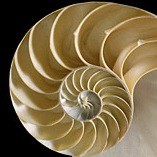An ancient method of literary writing that has (relatively) recently been re-discovered in t ancient and religious texts is Ring Composition, a form of mirror writing called chiasmus, described by the anthropologist and scholar Mary Douglas in her book Thinking in Circles: An Essay on Ring Composition (Yale University Press, 2010) as essentially “a framing device” wherein the first section of a text corresponds in some clearly evident way with the last section, and the middle sections form a mirror pattern around a middle section which is also the central idea or turning point for the entire text. The mirror pattern can be described as ABCBA, expandable to more or fewer (at minimum 3) sections as needed with a center section “C”. This website gives an excellent example from the Quran, analyzing Surat Al-Baqara (the Cow) as well as significant subsections of it, including the famous Ayat al-Kursi (2:255). But for this post I will analyze Surat Al-Fatiha in Ring Composition, which provides evidence of two things: that the first numbered aya must be the Bismallah, which precedes all other Surahs except the 9th (“Repentance”) without being numbered; and that the two great attribute names for Allah the Exalted, Al-Rahman (The Almighty), Al-Raheem (The All-Merciful) express the two polarities of Power/ Yang and Mercy/ Receptivity/ Yin. Below is a graphic of this analysis:
Continue reading
